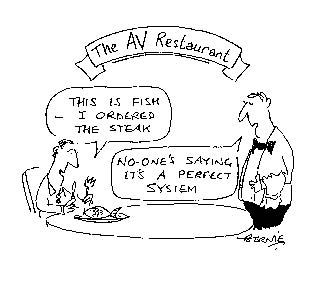There are few things that irritate an MP in the chamber of the House of Commons more than the sight of all the journalists in the press gallery walking out in the middle of a debate.
There are few things that irritate an MP in the chamber of the House of Commons more than the sight of all the journalists in the press gallery walking out in the middle of a debate. It annoys them so much not because it means their own remarks will probably go unreported but because it is a visible symbol of the shift in power from the legislature to the executive. The journalists are all dashing out to hear some government aide explain what a minister really meant by an earlier statement.
On Monday, the briefing that followed a statement from Michael Gove also revealed a shift of power within the coalition. As Gove explained how the coalition was going to replace Labour’s scheme for paying less well-off children to stay on at school, a loyal aide sat on the gallery’s green benches waiting to brief the press. Then a Lib Dem spin doctor bounded in and sat next to him. The message was clear: this is a Liberal Democrat policy victory. Indeed, anyone who had read the papers on Saturday would have known that Nick Clegg had persuaded the Tories to put £70 million more into this scheme than they intended.
When Gove sat down, the Tory and the Liberal Democrat spinners disappeared around a corner for several minutes to try to agree what they were going to say to the journalists present. It didn’t take the skills of Woodward and Bernstein to work out what the subject of this little negotiation was.
It was just the latest — and most visible — example of the new, more aggressive Lib Dem approach to coalition. In the past few weeks, in particular, the Lib Dems have been making a nuisance of themselves. The Tories have had to read the newspapers to find out what arguments they’re having with their Lib Dem colleagues. As one complains, ‘Vince Cable is just orchestrating fake rows to try to make himself look good.’
There is logic behind this aggression. The Lib Dems are worried that their identity is being lost in the coalition — and are picking fights in the hope of standing out. Before the elections on 5 May, they want to remind the public that they are a distinctive party.
The Lib Dems have also been antagonised by the way David Cameron and the Conservative machine are raising money for the No campaign — which is then spending it on attacking Nick Clegg. In private, Liberal Democrats complain that their leader is being ‘swiftboated’ — a reference to the run-up to the 2004 US presidential elections, when John Kerry’s war record was trashed by American campaign groups separately funded by Republicans. The Tories, some Lib Dems suspect, are fighting an anti-Clegg campaign by proxy.
This resentment is heightened by the fact Clegg is being attacked by the No campaign for breaking his promises on tuition fees when he did so for the sake of the coalition. To some, this is a sign of rank betrayal — and proof that the Lib Dems need to take off their sandals and put on hobnail boots. They say that the party can no longer rely on the Tories’ to give them their share of the credit. Instead, they need to seize it wherever they can.
This simmering Lib Dem anger explains why the ever ambitious Chris Huhne wrote to the Tory chairman Baroness Warsi demanding that she disown the ‘gutter politics’ of the No campaign. Huhne even warned that if the No campaign were not reined in, the coalition could be broken by this referendum. And this, of course, is code for bringing down the government.
Andrew Lansley’s NHS reforms could cause these tensions to boil over. The Tories now in Downing Street are acutely conscious of their party’s historic weakness on this issue. They came of age — politically — at a time when the BMA was flattening the Tories for Ken Clarke’s proposed reforms to the heath service. The Tories live in fear of the accusation that they are trying to privatise the NHS. ‘You can’t trust the Tories with the NHS’ is one of the few Ed Miliband lines that sends a collective shiver down the Tory frontbench during Prime Minister’s Questions. They know just how deadly this charge can be.
Ever since Cameron became leader, he has sought to avoid battles over health. After becoming leader, he even proposed making the NHS independent from the government. At the time, the Cameroons privately likened this move to how Gordon Brown had neutralised the traditional distrust of Labour’s handling of the economy by giving the Bank of England independence in 1997.
But now the Conservatives find themselves preparing to embark on the most comprehensive reform of the NHS for a generation. Worse, this policy has taken even Tory cabinet members by surprise. The reforms are hugely complex — and they are championed by a Health Secretary who struggles to explain them.
This situation has caused huge nervousness inside Downing Street. Oliver Letwin, Cameron’s policy fixer, has been asked to double- and triple-check the models. Adding to these nerves is the polling being passed around by Cameron’s new chief political strategist Andrew Cooper (who was sceptical of the reforms before he was hired) which shows the public are suspicious about not being told about these reforms beforehand.
The wild card is what the Liberal Democrats do next. Given that a U-turn looks likely, the Lib Dems could do great damage by taking credit for killing off the policy. They might well boast that they have stopped the Tories from hurting the NHS — thereby reviving the old fears about the Tories’ motives when it comes to the health service, and reinforcing their credentials as the good guys who stop the nasty Tories from doing bad things.
The Liberal Democrats in the Lords could be even more problematic. Shirley Williams, who led the opposition to these reforms at the Lib Dem spring conference, was seen having a long conversation with the Labour leader Ed Miliband about how best to amend the bill after they had both appeared at a pro-AV event on Tuesday. Both sense that a humiliating Conservative climbdown is in the offing and want to take credit.
Cameron’s skills as a coalition Prime Minister are going to be tested as never before in the coming months. He is going to have to work out how to protect the Conservative party’s interest while keeping his increasingly assertive junior coalition partners on board and in line. How he handles the NHS reforms is the next big test.







Comments